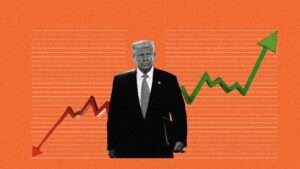The Volokh Conspiracy
Mostly law professors | Sometimes contrarian | Often libertarian | Always independent
New York Times Symposium on "A Road Map of Trump's Lawless Presidency"
I was one of 35 legal scholars who took part.

Earlier today, the New York Times published a symposium entitled "A Road Map of Trump's Lawless Presidency." Thirty-five legal scholars took part, including myself. Here is an excerpt from the editors' summary:
Times Opinion recently reached out to dozens of legal scholars and asked them to identify the most significant unconstitutional or unlawful actions by Mr. Trump and his administration in the first 100 days of his second presidency and to assess the damage. We also asked them to separate actions that might draw legal challenges but are, in fact, within the powers of the president. And we asked them to connect the dots on where they thought Mr. Trump was heading.
We heard back from 35 scholars — a group full of diverse viewpoints and experiences, including liberals like U.C. Berkeley's Erwin Chemerinsky and Harvard's Jody Freeman; the conservatives Adrian Vermeule at Harvard and Michael McConnell, a former federal appeals court judge who directs Stanford's Constitutional Law Center and is a member of the Federalist Society; and the libertarians Ilya Somin at George Mason University and Evan Bernick at Northern Illinois University….
From all of their responses, we constructed a road map through Mr. Trump's first 100 days of lawlessness, including his defiance of our judiciary and constitutional system; the undermining of First Amendment freedoms and targeting of law firms, universities, the press and other parts of civil society; the impoundment of federal funds authorized by Congress; the erosion of immigrant rights; and the drive to consolidate power.
This road map largely draws on the scholars' words, which serve as bright red warning lights about the future of America….
Not all of our legal scholars saw every Trump action the same way, and one saw the problem as lying more with the courts than with the administration. But there was abundant assent that the president is trying to operate without limits and that the rule of law and especially due process are being profoundly tested and challenged. This guide through the first 100 days is by no means exhaustive but rather reflects legal issues our 35 scholars highlighted repeatedly or with the gravest concern.
Two of my statements made it into the symposium. Here is the first, which gives my overall assessment of the administration's agenda:
They seek a massive increase in presidential power, which if fully achieved would potentially undermine most of the constitutional separation of powers and create an elective monarchy or a quasi-authoritarian state. If they prevail, it would be terrible for the rule of law and liberal democratic values generally. But they can be stopped and hopefully will be.
There is also this on Trump's usurpation of the spending power:
No other modern president has tried this on such an enormous scale. If allowed to stand, it would enable the president to both seize control over hundreds of billions of dollars in federal funds and coerce state and local governments by imposing grant conditions not authorized by Congress. All of this also violates the Constitution — both federalism and the separation of powers.
I expounded on my concerns in greater detail in the similar recent Free Press symposium, which had fewer participants and therefore gave each person more space. For those keeping track, I was also highly critical of Joe Biden's usurpations of the spending power, as with his student loan forgiveness power grab. But Trump's abuses are more systematic far-reaching.
As in the Free Press symposium, there was a lot of cross-ideological agreement between the NY Times participants. For example, I agree with nearly all the comments made by big-name conservative constitutional law scholar Michael McConnell (Stanford) who participated in both symposia. I also agree with the majority of points made by liberal/progressive participants, though by no means all.
The NY Times symposium is somewhat less ideologically balanced than the FP one. NYT has a large preponderance of left-of-center participants (all but about four or five, by my count, though I could have missed some, because not every participant got quoted), while FP had three conservatives (including two who are very far to the right of me), two progressives, and two libertarians (Jonathan Adler and myself). One possible explanation for difference is that the NYT piece was limited to law professors, while FP featured two non-academic commentators among its total of seven (both conservatives). Lawprofs are, on average, a much more left-wing group than non-academic legal commentators.
Nonetheless, it is noteworthy that, between them, these symposia show a wide range of agreement that Trump 2.0 is engaging in numerous illegal actions and threatening the constitutional system in various ways. And many of these concerns go far beyond the academic left.
There are. admittedly, a few MAGA-friendly legal scholars (or those who back nearly unlimited executive power), represented in the NYT symposium by Harvard law Prof. Adrian Vermeule. But such people are a minority even among non-left wing experts in thfield.
A minority view can, of course, still be right (I hold many minority views myself!). But in this case, it just isn't. The scope and magnitude of Trump 2.0 illegality are too great for any plausible defense.


Show Comments (200)